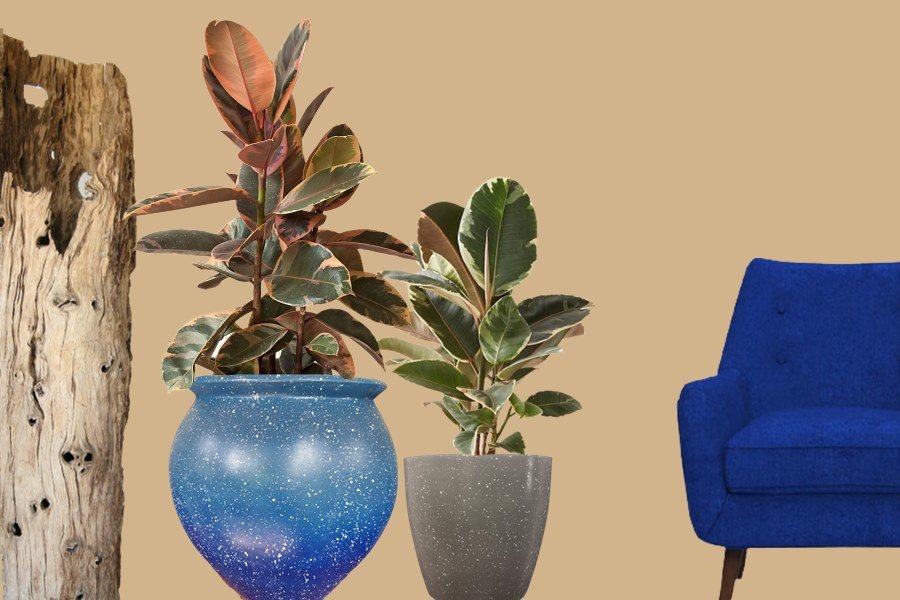
The fiddle leaf fig tree is very popular among plant collectors these days. Despite this, few people are familiar with this well-known tree. That’s why we figured we’d use the opportunity to write about this plant. The tale of the fiddle leaf fig begins on the coast of West Africa. It has been growing in the wild for millions of years in a variety of West African nations. As a native species, the plant flourishes in Sierra Leone’s and Cameroon’s lowland tropical rainforests.
It’s in the Moraceae family of plants. The Moraceae family includes plants like mulberries and fig trees, as well as over 1000 others.
As a result, the “ficus lyrata” has many relatives (perhaps 850 ). The fiddle leaf fig has become a famous city dweller’s houseplant. However, underneath the sophisticated appearance, there lies a tragic past in the woods.
Instead of growing from its roots, it sprouts from the top of another tree’s crown. There has been an invasion of personal space. The seeds of the fiddle leaf fig tree fall precisely on top of another tree in the forest that is competing for sunlight. Because it is so high up, the fiddle leaf fig tree gets a lot of sunshine.
As the plant’s seed germinates, the roots of the fiddle leaf fig begin to wrap themselves around the trunk of the other tree. This kind of plant is known as an epiphyte. The fiddle leaf fig tree’s roots eventually strangle the host tree. Who’s to say nature isn’t cruel?
On the other hand, the growth of a fiddle leaf fig plant can be peaceful. It doesn’t have to develop like this; it can also stand on its own.
The rainforest’s competitive environment, on the other hand, is a plant-eat-plant world. Have you ever wondered why the Ficus lyrata fig is referred to as a fiddle leaf fig? It is, after all, self-evident. The plant gets its name from the violin-like leaves that seem like fiddle strings.
Popular Varieties of Ficus Plant | Fiddle Leaf Fig Tree | Ficus Lyrata

1, Fiddle Leaf Fig Plant
The fiddle leaf fig plant is a houseplant rock star, and it shows no signs of slowing down. Violin Leaf Fig leaves are big and elongated, resembling a fiddle. Humidity is key, so get a good humidifier for your plant. To guarantee a vigorous and happy plant, make sure your fiddle leaf fig receives plenty of indirect sunlight, check the moisture level of the soil before watering, and invest in a decent fiddle leaf fig plant food. Fiddle leaf figs, in exchange, clean the air like no other, eliminating pollutants and releasing pure oxygen.

2, Ficus Audrey
The Audrey is a more laid-back version of the Audrey. If you have a hectic schedule and limited time, this might be a better option for you. It’s best for city inhabitants who have mostly filtered light, and it thrives in damp soil.

3, Variegated Rubber Plant
Variegated rubber trees feature red leaves, cream, yellow, and green in color instead of typical rubber tree leaves. In the winter, water the plant every 10 to 14 days and every 5-7 days in the summer.

4, Bambino/Dwarf Fiddle Leaf Fig
The bambino/dwarf fiddle leaf’s fiddle-shaped leaves retain the rainforest’s atmosphere. A small Fiddle Leaf Fig is a lovely addition to any arrangement. A decent moisture meter, as with other plants, can save you a lot of heartaches. Bambino, the dwarf fiddle leaf, requires fast-draining soil, adequate plant food, indirect sunlight, and humidity because it is a tropical plant.
5, Variegated Fiddle Leaf Fig
The beauties resemble regular fiddle leaf figs with those large, fiddle-shaped leaves we’re all familiar with. Still, instead of solid, dark-green leaves, the variegated fiddle bears leaves with that beautiful green in the center but gorgeous swaths of white, silver, and cream coloring around the outside.

Fiddle Leaf Fig Care Tips
Light:
Place your fiddle leaf fig near a sunny, east-facing window to get enough light. Clean the leaves of your fiddle leaf fig tree once a week to keep them clean and allow the plant to see the light.
Water:
Coldwater can shock plants; room temperature water is preferable. Fiddle leaf figs prefer to be watered often but not completely submerged. To avoid this, make sure the water in the pot’s bottom is entirely drained and the tray or saucer is dry.
Temperatures:
Like those found in their native rain forests, Warm, humid habitats are preferred by these plants. If their leaves are exposed to the sun, they may dry out and fall off.

Conclusion:
Sharing space with a fiddle-leaf fig, a symbol of abundance, fertility, and good luck can assist in clearing negative energy and lifting your spirits. The Fiddle Leaf Fig is a popular house plant that can enhance your home’s appearance. They have enormous, lovely fiddle-shaped leaves and can grow to be 10 feet tall indoors. With proper care, fiddle leaf figs can grow into attractive trees that you can propagate. These plants will become the center point of any room, even though they do not produce flowers or fruit. Fiddle leaf figs aren’t the easiest plants to grow, but with the appropriate conditions, they’ll thrive and grow tall and healthy, and the tree in full bloom.
Authors | Guests Bloggers
More Stories
Cercestis Mirabilis Care | Plant Guide
Alocasia Black Velvet Care | Plant Guide
Philodendron Giganteum Care | Plant Guide
Types of Philodendrons | List of Varieties With Pictures
Philodendron Billietiae Plant Guide
Alocasia Amazonica and Polly Plant Care Guide
Philodendron Pink Princess Plant Guide
Thai Constellation Monstera Plant GuidePhilodendron Florida Ghost Plant Guide

